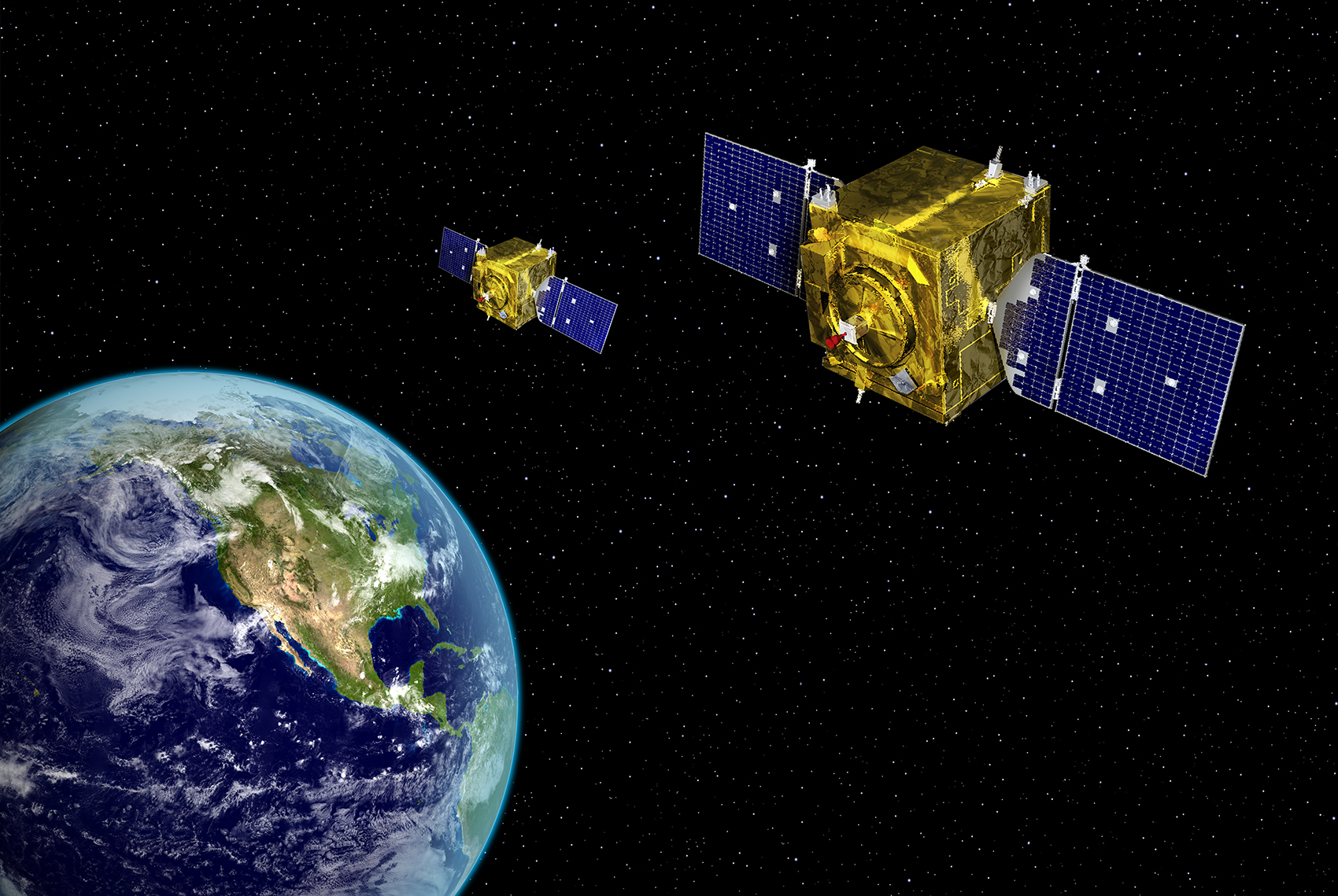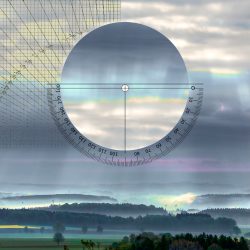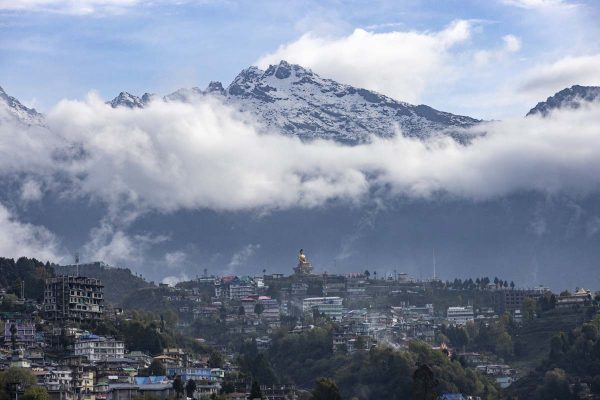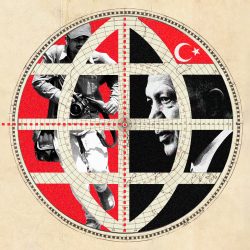How space traffic in orbit could spell trouble on Earth
It was February 2009, and a disaster was about to occur 500 miles above Siberia: A dead Russian satellite, Cosmos-2251, was on a direct collision course with a communications satellite operated by Iridium, an American company.
The orbits of the two wrapped around the globe, their paths forming a giant X. As they approached one another, it would have been clear to anyone watching that they were headed for exactly the wrong place at exactly the wrong time.
But no one was watching. The satellites crashed into each other, at a relative speed of more than 22,000 miles per hour.
They immediately broke into thousands of pieces.
Lisa Ruth Rand was watching the news of the dramatic breakup just as she was beginning graduate school. When the two spacecraft crashed, they formed two streams of debris that continued along the orbital paths they’d once traveled. It made Rand, who today works as an historian of technology at the California Institute of Technology, realize that Earthlings only have limited dominion over this part of the universe.
“Human beings, yes, can design and control objects to a certain extent,” Rand told me. “Ultimately, nature plays a role as well.”
And there nature was, slinging brand new space trash around the planet.
Either Russia or the U.S. could have worked a little harder to prevent the collision: Both countries did some satellite tracking and collision warning, but the pending Cosmos-Iridium doom wasn’t on their radar.
The debris that the Cosmos-Iridium crash left in its wake has posed potential collision risks for other satellites ever since. And that garbage has plenty of company. For decades, countries and companies have launched satellites, let them live out their useful lives and then kept them in orbit long after they were “dead,” or inactive. They’ve also left behind spent rocket bodies and whirling debris from other crashes past. In low Earth orbit — the part of space where satellites are closest to the Earth itself — accumulating debris poses a crash risk but cannot, on its own, get out of the way. Alongside it are thousands of live satellites that must avoid both the debris and one another.
And the issue is only going to get worse. On August 23, an Indian spacecraft became the first to land on the moon’s south pole region. Just days before, a Russian craft attempting a similar feat crashed into the moon’s surface. The two events herald the start of a new space race, which brings with it the threat of adding even more space junk into the mix.
Just as car accidents are more likely to happen at rush hour, space collisions are bound to increase as active satellite and spacecraft traffic ramps up, littering the celestial road with trash. Crashes are more likely than ever today because there are more spacecraft in the near orbits. And even though most of us can’t see it, the picture up there isn’t pretty.

The number of active satellites in Earth’s orbit has jumped from around 1,000 in 2009, when the Cosmos-Iridium crash occurred, to nearly 7,000, thanks to satellite “constellations”: sets of dozens, hundreds or thousands of small spacecraft that work together to perform a single task. About 4,000 of the satellites currently in orbit are in constellations run by Starlink, the satellite internet service owned by Elon Musk’s SpaceX.
When you’re on Earth’s surface, you reap the rewards of satellite infrastructure without thinking too much about what’s going on above you. But if that infrastructure, or parts of it, stopped functioning, you’d think about it a lot.
Imagine if GPS went down. Though GPS satellites don’t sit in the most crowded orbits where the big constellations are, their part of space nevertheless has its own share of crash risk, and a cascading set of events could cause them to malfunction. Without a live navigation system, aircraft couldn’t get from place to place. Weapons systems couldn’t aim at targets. Drones wouldn’t know where they were or where to go. You couldn’t find your way to the grocery store in a different neighborhood or use Tinder in any neighborhood. GPS satellites also act as ultra-precise clocks, sending out timing signals that industries across the world rely on. Without those time stamps, the electrical grid could freeze up, financial transactions couldn’t go through, and data packets flowing through the internet and mobile networks wouldn’t work right.
Communications satellites would cause even more issues on Earth if they stopped doing their jobs. Soldiers, ships and aircraft could lose access to secure communication channels. Civilian pilots couldn’t talk to air traffic control. Cargo ships couldn’t speak to those on land. People in conflict zones would have difficulty getting information from, or providing information to, the outside.
On top of the disruptions to services that rely on communications satellites, without orbital infrastructure, humans would lose access to key weather forecasting data, leaving us relatively blind to signs of oncoming natural disasters. Lots of intelligence is gathered from above too: Without satellites, nations would lose insights into what’s happening on the ground in times of war – satellites offer key information on things like troop buildup or movement. Earth observation companies help with acquiring some of that intelligence and also collect images and data that help with climate change monitoring, agriculture, mining, piracy, illegal fishing, deforestation and disaster aid. But they can only do that if their satellites work properly.
All told, a major collision in space could spell catastrophe on the ground. The only way to avoid serious crashes and the creation of more debris is to make sure that the orbit doesn’t get too crowded — and that the crowd already up there stays safe from itself.

After the Cosmos-Iridium crash, the U.S. amped up its collision-avoidance capabilities and began issuing collision warnings to satellite operators all over the world, including to foreign governments. The number of warnings that the U.S. government sends out has increased greatly since 2009, alongside the jump in orbiting spacecraft.
Despite the growing orbital population, though, only a patchwork of regulation and governance exists for “space traffic management.” The International Telecommunication Union governs the use of the electromagnetic spectrum — regulating the frequencies on which satellites communicate and the use of the Earth’s orbit as a resource. But it has no enforcement powers. The U.N.’s Committee on the Peaceful Uses of Outer Space also weighs in on space traffic issues periodically and is attempting to ramp up this work, but it does not issue enforceable standards either. While the U.S. alert system exists, it is not equipped to be the space traffic manager for the whole world.
“It’s pretty minimal,” said Victoria Samson, the Washington office director for the Secure World Foundation, a think tank dedicated to safe, sustainable and peaceful uses of space. “There is no requirement for action when receiving those conjunction warnings,” she told me. “And there is no one coordinating any of it.”
No two active satellites have ever crashed into each other to date, except a spacecraft that collided with the Mir space station while trying to dock there. The Cosmos-Iridium crash involved one active satellite and one dead one. But without clear authority or protocols, mishaps inevitably occur, and as the amount of stuff floating in space increases, so does the likelihood of a major crash.
People like Samson and Lisa Ruth Rand worry that the existing regulatory system may not be comprehensive or international enough to make sure satellites stay safe in this new era. If another big crash, or a set of crashes, did happen, the results on the ground could be hugely disruptive.
“That infrastructure is so invisible,” Rand told me. “It’s not the same thing as when the lights go out. But when the satellites go out, that’s going to be a pretty big deal.”
“There will eventually need to be a more formal coordinating mechanism,” said Samson, “rather than two-party discussions on an ad hoc basis.”
A recent SpaceX fiasco offers a cautionary tale: In 2019, SpaceX had just 60 Starlink satellites in orbit. Predictions showed that one of those 60 had a relatively high likelihood of colliding with a European Space Agency satellite called Aeolus. The space agency saw this coming – having projected the spacecrafts’ predictable paths into the future – and reached out to SpaceX about a week in advance, asking if the company intended to move to a safer spot. SpaceX said it had no such plans: The likelihood of a crash was, at the time, about 1 in 50,000.
But as the days went by, that probability rose, reaching around 1 in 1,000 — still not likely but not a number to play around with.
The European Space Agency repeatedly tried to reach SpaceX again as the situation evolved.
They heard nothing back.
They sent 29 alerts to SpaceX. Still, there was no reply.
As the day of the potential collision grew closer, with no word from SpaceX, the European Space Agency decided to change its own object’s trajectory.
SpaceX, it turns out, had a bug in its notification system, and the company was on a holiday weekend. No one was checking their email.
SpaceX doesn’t need any particular one of its Starlink satellites to continue to provide internet: It has thousands of satellites in part to make individual satellites expendable and redundant. But if it had impacted Aeolus, or any satellite that doesn’t have such redundancy, the crash could cut capabilities — and the debris from the collision could put many more spacecraft at risk.
A SpaceX Falcon 9 booster, containing 50 Starlink satellites, was launched into low-Earth orbit in February 2022. Photo via U.S. Space Force.
SpaceX has so far avoided all crashes because it can propel its Starlink satellites away from danger. Nevertheless, it has been implicated in a lot of potential crashes. In 2021, with just 1,700 satellites in orbit — in contrast to today’s 4,000 — the company was already involved in half of all close-approach alerts, known as “conjunction alerts,” according to Hugh Lewis of the astronautics research group at the University of Southampton.
And 4,000 is far from the final figure that SpaceX is aiming for. The company’s initial constellation will boast 12,000 satellites, and in its final form could involve 42,000. Today, the satellites provide internet and communication access for people in rural areas and in conflict zones like Ukraine — at least when Musk keeps the services turned on.
When the remainder of the initial set of Starlink satellites are in orbit, Musk’s enterprise could be implicated in 90% of all collision warnings, Lewis estimates.
Since 2020, Lewis has been analyzing Starlink satellites’ conjunction rates and measuring how often satellites have to maneuver around potential problems. In one recent dispatch, his data showed that the satellites have had to perform more than 50,000 moves since the end of 2020 to avoid potential crashes.

Lewis’ data indicates that as the number of Starlink satellites increases, the cumulative number of avoidance maneuvers increases at an approximately exponential rate. In other words, a few more satellites equals many more moves and a greater potential for disaster.
“On the basis of probability, something bad is going to happen,” he said.
There is a paradox here: Creating more satellite infrastructure to enable more connections and capabilities on Earth could be precisely what threatens those connections and capabilities. One way to dull that double-edged sword is to get satellite makers to coordinate — internationally and by law — to make sure their proposed constellations can play nice.
There are options for fixing the mistakes of the past. For instance, we could take the trash out now. Humans could clean up the space around our planet by removing our old debris — transporting dead satellites to “graveyard” orbits where they won’t bother anything, or “deorbiting” them by sending them to burn up in the atmosphere.
But such a proposition is tricky. The U.S. can only touch trash that the U.S. created. Russia can only touch its own trash. The same goes for China or anyone else.
Touch someone else’s trash without permission, and you could create a full-on international incident. Sometimes, too, if you touch your own trash without telling others you plan to, you may stir global tensions.
In 2021, China’s Shijian-21 spacecraft spent months hovering around an orbit, getting close to other satellites — with the country staying mum about its actions. Finally, Shijian-21 sidled up to a defunct Chinese navigation satellite, docked with it and towed it to a graveyard orbit.
That’s an example of what scientists call “space debris mitigation,” and it’s technically good: That satellite was no longer a part of the traffic and no longer presented a risk to other spacecraft. But if a satellite can get that close to and physically move another spacecraft, it could do so to any spacecraft, regardless of who it belongs to. The same technology could also be weaponized to damage or deactivate a satellite.
Brian Chow, a space policy analyst, says China shares information about its commercial activities but is “evasive about those that can enhance its military capability,” like the Shijian-21 incident.
“China has been secretive in the development and tests of its rendezvous and proximity operations,” Chow said. And that secrecy — alongside the opacity surrounding China’s other space activities with military implications — is unlikely to change.
The lack of communication from China concerns officials from other countries because of China’s ability to potentially conduct an attack in space or cause space “situational awareness” problems. From a traffic perspective, without direct information from the country, managing potential crashes becomes more difficult: Space traffic trackers can make better predictions and give better warnings if they receive direct information from satellite operators about a spacecraft’s position or planned maneuvering. The Shijian-21 event and the silence around it, however, are typical of China’s lack of transparency.
In another example, earlier this year, Lieutenant General DeAnna M. Burt of the U.S. Space Force said that when the U.S. sends warnings about conjunctions that could affect China’s space station, they get crickets in return.
“Many authoritarian countries that don’t share information with the populace don't share it internationally,” said Darren McKnight, a senior technical fellow for LeoLabs, a private company that performs its own space traffic tracking and management on behalf of satellite companies and space agencies. “And so I’d be concerned if China and Russia started putting up 10,000-, 13,000-satellite constellations that they would be as open about what they’re doing.”

Imagine a constellation that would add exponentially to the crash risk, like SpaceX does, but whose operators wouldn’t coordinate or share precise information that cannot be gathered from afar.
China does, actually, have a plan for such a constellation: a 13,000-spacecraft herd called Guowang that will, like Starlink, provide internet service. For Guowang to work well for the world, the country needs to become a part of space traffic dialogue and share information.
Chow believes they will. “If China does not collaborate or share information, the U.S. would have to rely on its own warning system and ability to maneuver,” he said. “On the other hand, as this constellation will primarily be used for commercial purposes, China will likely share information to avoid these satellites from being hit so that they can perform their missions cheaper and better.”
That could lead to more formal crash-avoidance coordination that Samson, of the Secure World Foundation, sees coming. But whatever that system looks like, it can’t be the only protective mechanism in place. “There will also have to be rules of the road established,” Samson said. “If two satellites are heading toward each other, who moves?” The newer satellite? The larger one? “And continued sharing of space situational awareness data is key to have a common understanding of the orbital environment,” she said.
Making sure that space stays safe is key to protecting life on the ground too. The modern world would cease to turn without satellites, and catastrophic crashes could move us closer to that point. Regulation, cooperation and public awareness are ways to step back and keep space traffic running smoothly, without stifling the good parts of orbital infrastructure — like increased connectivity on Earth.
Cleaning up orbit and orbital behavior may seem daunting, but it’s possible: It happened, for instance, with the oceans. Until the middle of the 20th century, people thought these bodies of saltwater were so large that mere human pollution could never alter them. When it became clear that the seas could indeed get slimy, people rallied to curtail the dumping of waste into the oceans.
While those initiatives have been far from perfect (see: the Great Pacific Garbage Patch), collective awareness of our ability to negatively impact the planet is much greater than it used to be.
The same could be more broadly true of space in the future. After all, environmental awareness of space is as old as environmental awareness on the planet. Earth’s environmental movement came about at the same time as the Space Age, around the 1960s, and the two shaped each other. “There’s been an almost explicitly environmental consciousness of outer space from the very beginning of the Space Age,” said Rand, the environmental historian.
That idea even shows up in what little international regulation exists in orbit. “There’s parts that are evident in the Outer Space Treaty,” Rand said, referring to the U.N. document signed by 113 nations about how to behave beyond Earth. For instance, the treaty has a provision stating that states “shall avoid harmful contamination of space and celestial bodies,” things like creating debris, causing crashes and making things too crowded for comfort.
The Outer Space Treaty also treats orbit as an international place — a common resource that no one owns but for which everyone bears responsibility. A coordination system that recognizes that responsibility could keep orbit, and everything satellites help us do on Earth, safe for the future.
The story you just read is a small piece of a complex and an ever-changing storyline that Coda covers relentlessly and with singular focus. But we can’t do it without your help. Show your support for journalism that stays on the story by becoming a member today. Coda Story is a 501(c)3 U.S. non-profit. Your contribution to Coda Story is tax deductible.
The Big Idea
Shifting Borders
-

When your body becomes the border
feature Erica Hellerstein
-

India and China draw a line in the snow
feature Shougat Dasgupta
-

How an EU-funded agency is working to keep migrants from reaching Europe
feature Zach Campbell and Lorenzo D'Agostino
-

Turkey uses journalists to silence critics in exile
feature Frankie Vetch










